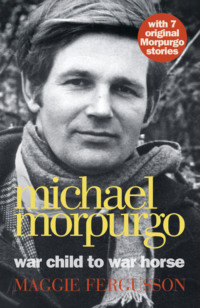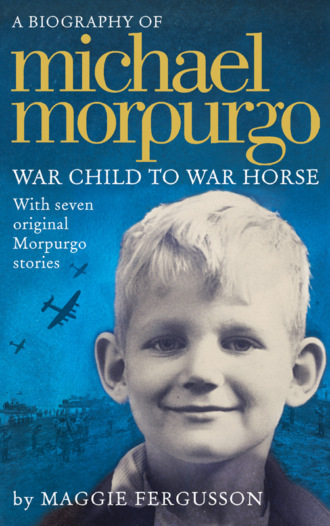
Полная версия
Michael Morpurgo: War Child to War Horse

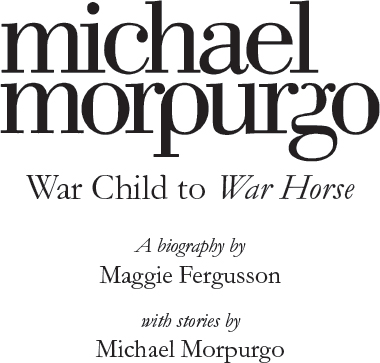

For Flora and Izzy
Contents
Cover
Title Page
Dedication
Preface by Michael Morpurgo
1. Where to Begin?
‘Bubble, Bubble, Toil and Trouble’
2. Spotless Officer Number One
‘A Fine Night, and All’s Well’
3. Situation Critical
‘Littleton 12–Wickhamstead 0’
4. A Winning Formula
‘Didn’t We Have a Lovely Time?’
5. The Heat o’ the Sun
‘A Bit of a Daredevil’
6. Better Answer – Might Be Spielberg
‘The Saga of Ragnar Erikson’
7. Still Seeking
‘Snug’
Activities
Bibliography
Acknowledgements
Copyright
About the Publisher
Preface
For me the telling of stories has been my way of communicating with everyone around me. Each of us sees the world differently from anyone else, has our own perspective on who we are, who we have been, and what kind of a world it is that we find ourselves living in. We have our own views on what influences, which individuals, what happenings, have made us who we are.
Most writers use memory, to a greater or lesser extent, as a stimulus for their stories or poems, but I think I probably have relied on it more than most. Maybe it’s because I have a less fertile imagination, and have always needed that bedrock of memory on which to construct my stories. But memory is not that reliable, is always biased – after all memory is simply your own life remembered from your own point of view – and not necessarily then a reliable source, if truth be told! That doesn’t matter of course if you’re writing fiction, but, when trying to discover the truth about yourself, it’s important not to confuse it with fiction.
All my writing life I have confused the two, which is why I knew I would find it almost impossible to tell my own story without straying into fiction, either unintentionally or intentionally. So, when it was suggested I write my own memoir, I knew I couldn’t and probably shouldn’t do it. I knew I would have to find someone who could tell the story of that life objectively, critically and with integrity. I had read Maggie Fergusson’s biography of the Scottish poet George Mackay Brown, and found it compelling and deeply moving. So I asked her if she might like to write my life story, and do it her way, the story of a story maker. And that is what she has done wonderfully well. I learnt much about life from this book, long forgotten memories, distorted memories. It is like looking into a mirror – not that comfortable an experience, particularly as you get older. The mistakes and the fault lines are there in every wrinkle, but so is the living.
We wanted it, though, not to be simply a straight biography, but to weave into it fictional stories that reflect my life as it was lived. Shakespeare it was who suggested we have ‘seven ages’ in our lives. So tell the biography in seven chapters, we thought, alongside a story inspired by each ‘age’ of my life. It seemed to us that the fact might illuminate the fiction and vice versa, a fusion from which both might benefit.
Michael Morpurgo
Devon, 2013
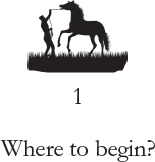
Where to begin, when telling the story of a writer’s life?
Perhaps simply with the moment of his birth. Michael Morpurgo, then, was born on 5 October 1943, at the height of the Second World War.
On the morning of his birth The Times announced that Corsica had fallen to the French Resistance – the first department of France to be liberated. In the days that followed it became clear that the Allies had the Germans on the run. On 7 October the Red Army mounted a new thrust on enemy positions along the River Dnieper, breaking the Germans’ 1,300-mile defence front; a week later Italy declared war on Germany. By the end of the month the Allies were bombing the Reich from Italian soil. In early December the British government announced that there would only be enough turkeys for one in ten families at Christmas, but any sense of joylessness was eased, on Boxing Day, by the news that the British navy had sunk the last of the great German battleships, the Scharnhorst, off the coast of Norway.
War has been a constant presence in Michael’s stories. And it is significant, as you will see in the story Michael has written to end this section of the book, that he was a child at a time when the war was just over, yet when its influence was still keenly felt and seen.
But if you want to understand the threads of Michael’s work – the ingredients that combined to make him a storyteller and performer – you need to start earlier, with his family. You see, Michael comes from theatrical roots, something which won’t surprise anyone who has seen him talk about his books on stage. For generations, theatre and stories have been part of the fabric of his family’s life.
Michael’s grandmother, Tita, was a large, imposing woman who gave Michael his first inklings ‘of what God might be like’. Before her marriage she had been a Shakespearean actress. She had a voice so deep and tremendous that she was often given men’s parts. Her mother, Marie Brema, had been a professional opera singer, who was once summoned to Buckingham Palace to sing for Queen Victoria.
Neither Tita nor her mother had their heads turned by success. Both believed deeply in Christian charity and most of the money they made on stage was poured into Brema Looms, a workshop providing employment for crippled girls from London’s East End.
In 1906 Tita, who in her late twenties had never so much as kissed a man, had met and fallen in love with a Belgian poet, scholar and nationalist, Emile Cammaerts. There were differences between them. Emile spoke very little English, and was an atheist. Tita set about tackling both problems with great forcefulness.
And she succeeded. A Belgian woman was engaged to teach Emile English (they began their lessons by teasing out Othello, line by line) so that by the time he and Tita were married in 1908 his English was fluent. He had also converted to Christianity with a zeal that would never leave him. As there was little prospect of Tita’s pursuing her stage career in Belgium, and as she felt she must look after her mother, they settled in London, before moving, as their family grew, to Radlett – a village in Hertfordshire.
Tall, and with a fine, monumental head, Emile Cammaerts became revered in academic and literary circles both for his intellect and for his passionate devotion to Belgium. Invalided out of the First World War with a weak heart, he threw his energies instead into composing fiery, defiant, patriotic poems to encourage his compatriots. He was Belgium’s equivalent of Rupert Brooke, the famous British poet of the First World War.
So patriotic was Emile, in fact, that when his fourth child’s birth coincided with a significant Belgian victory over the Germans, he named her after the hamlet, De Kippe, where this had taken place. This daughter, Kippe, would grow up to become Michael’s mother, and an actor like her mother.
To Michael, as a small boy, Emile Cammaerts seemed ‘all that a grandfather should be’. He had a flowing beard, thick tweed suits and heavy brown shoes. He emanated jollity. His theme tunes, in Michael’s memories, are Mozart’s horn concertos, to which he would bounce his grandchildren on his knee; and he had about him what his Times obituary would describe as an air of ‘enchanted innocence’. Though he had made his career as an academic, his earliest published works had been plays for children, and he had written a study of nonsense verse. He would delight Michael with recitals of ‘The Owl and the Pussy-cat’, ‘The Dong with a Luminous Nose’ and, most memorably,
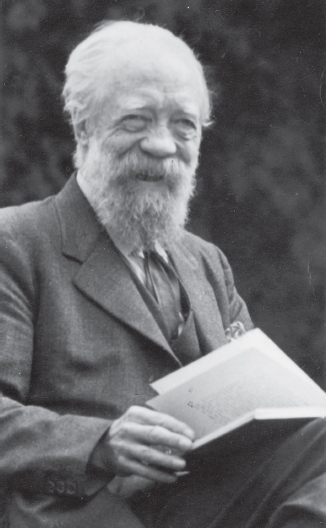
Emile Cammaerts, 1943.
There was an Old Man with a beard,
Who said, ‘It is just as I feared! –
Two Owls and a Hen, four Larks and a Wren,
Have all built their nests in my beard!’
With this background – three generations of actors, from his opera-singing great-grandmother to his mother, and a grandfather who wrote plays for children, is it any wonder that Michael turned out a storyteller?
Emile Cammaerts’s reputation was considerably greater than his income, and with six children he and Tita were forced to run the household at the Eyrie along strict make-do-and-mend lines. Michael’s aunt Jeanne remembers Tita darning broken bed springs with 15-amp fuse wire; and avoiding, wherever possible, spending money on clothes, either for herself or for the children.
There was one area in which indulgence was encouraged. The early lives of both Emile and Tita had been bleak. Tita’s father had separated from her mother soon after her birth, abandoning her to a lonely, rootless existence, trailing with her diva mother round the concert halls and opera houses of Europe. Emile’s father had, similarly, left his mother, just before his birth. Both Emile and Tita, as they grew up, had sought security and comfort in beauty – the beauty of the natural world, and the beauty of art.
At the Eyrie they set out to create a home in which their children would be surrounded and sustained by music and painting and books. ‘Every meal,’ Jeanne laughs, ‘was a seminar.’ Even games of rummy and racing demon bristled with moral and intellectual competition. In the red-linoed first-floor nursery, parents and children gathered round a huge black table to read Shakespeare plays – Tita making a memorable Othello.
With such a rich diet of culture, there was little appetite for material comfort. Asked to choose between a new stair carpet and a gramophone recording of Schubert’s trios, Jeanne and her siblings voted unanimously for Schubert.
Sitting in an armchair in an old people’s home in Oxford, Jeanne, now in her late eighties, looks back with gratitude and love on the home that her parents created: ‘They had no model to go on, but they were trying to make a perfect world for us.’ And to some extent, for a while at least, they succeeded.
But, of the six children, the plain living and high thinking at the Eyrie suited Michael’s mother Kippe least well. Her gifts were intuitive rather than intellectual, and at St Albans High School, though she shone on the lacrosse field, the teachers made it clear that she was a disappointment after her academic sisters. She was, perhaps, slightly dyslexic. During the family readings of Shakespeare she stumbled over her parts, and this was bitter to her because she had, in fact, a natural feeling for words and characters. The frustration and humiliation she suffered as a result led her to bully her younger, brighter sister, Jeanne.
Increasingly, Kippe recognised that what she really wanted was to act. After school she won a place at RADA, and from there she went on to build a successful career in repertory. It was in the middle of a rehearsal in the Odeon Hall, Canterbury, in the autumn of 1938, that a man called Tony Bridge stepped on to the scene.
There was nothing remarkable-seeming about this new recruit to the company. A year older and slightly shorter than Kippe, he was not especially good-looking. Yet within weeks of their meeting, Tony and Kippe – or Kate, as he called her – were spending almost all their time together, heading off into the Kent countryside for long walks when they were not required on stage.
In Tony Bridge, Kippe had found a companion of real kindness, a man with what one of his friends later described as an extraordinary gift for ‘ordinary human understanding’. The only child of lower-middle-class Londoners, he had a talent for amusing people, and for lightening and cheering any company in which he found himself. He made Kippe feel safe and happy. A friend, Mary Niven, remembers a joyful evening she spent with the two of them, during which they sang together. ‘They triggered each other off. They were lost in delight.’
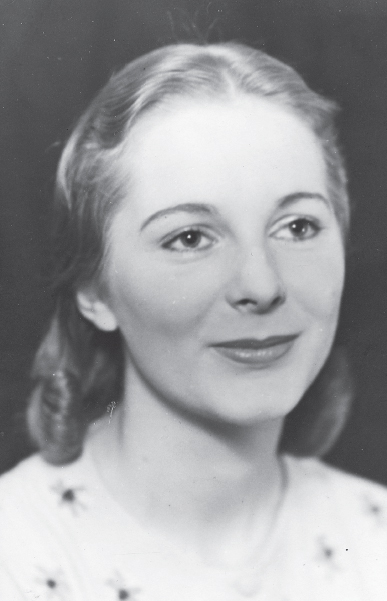
Kippe
Through the beautiful summer of 1939, their repertory company played to dwindling audiences until, on the outbreak of war, the Odeon Hall was closed. The following spring Tony Bridge was called up, and for the next eighteen months he was shunted from camp to camp around Britain, settling at last in the Scottish coastal town of Montrose. On 26 June 1941, during a short army leave, Tony and Kippe were married at Christ Church, Radlett. They are captured in a photograph on the steps of the church, Kippe beaming and beautiful, Tony in his army battledress and heavy boots, the Cammaerts and Bridge parents flanking them, smiling as the occasion demanded.
The smiles are deceptive. On that early summer day, Emile and Tita Cammaerts, at least, were far from happy – and not simply because they had doubts about their future son-in-law. Less than three months earlier they had received the news that their younger son, Pieter, who had joined the RAF early in the war, had been killed, his body cut from the wreckage of a plane near the RAF base at St Eval in Cornwall. His funeral had been held at Christ Church. As his parents posed for Kippe’s wedding photographs, the earth was still fresh on his grave.
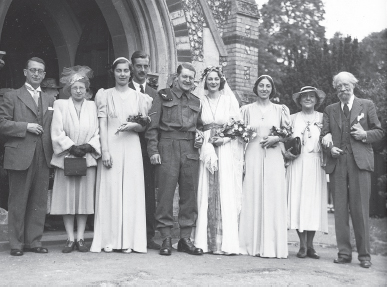
Michael’s parents’ wedding, 26 June 1941. Left to right: Arthur and Edith Bridge, Jeanne and Francis Cammaerts, Tony and Kippe, Elizabeth, Tita and Emile Cammaerts.
Pieter Cammaerts was just twenty-one when he died, and his death cast a long shadow down the years, proving to be a lasting influence on Michael’s writing. A difficult, unsettled child, he had followed Kippe to RADA and had proved himself an actor of real talent, leaving in the spring of 1938 with the Shakespeare Schools Prize. At eighty-six, Jeanne still wipes tears from her eyes as she remembers his winning performance as Claudio in Shakespeare’s play Much Ado About Nothing:
Ay, but to die, and go we know not where …
A fable of heroism grew up around Pieter’s last moments. The story that Kippe clung to – that she passed on to Michael, and that Michael has woven into stories of his own – was that the plane in which Pieter was flying as an observer had been damaged during an enemy attack, and the pilot wounded. Seizing the controls, Pieter had insisted that the rest of the crew parachute to safety leaving him to try to land alone.
But a visit to the National Archives in Kew suggests that the truth is less romantic. Sergeant Pieter Emile Gerald Cammaerts, serving with 101 Squadron, took off from RAF St Eval in a Blenheim bomber on the evening of 30 March 1941 on a mission to Brest – a mission that turned out to be fruitless (‘Target area bombed but no results observed’). On return the plane overshot the end of the runway and crashed, killing Pieter and the pilot, and leaving the third member of the crew severely injured.
In his recent novel A Medal for Leroy, written shortly after I told him of my discovery at Kew, Michael explores a similar story in a fictional way. Michael, the book’s protagonist, grows up believing that his Spitfire-pilot father was killed in glorious battle; eventually, though, he learns the truth – that he died because of a bad take-off.
Pieter’s siblings reacted in very different ways to his death. His elder brother, Francis, who had, at the outbreak of war, registered as a Conscientious Objector, now joined up. But Kippe was too devastated to do anything but weep. For the rest of her life, if Pieter’s name was mentioned, Kippe would walk out of the room; and on Remembrance Sunday every year she would take herself up to her bedroom and perform a private ritual, placing a poppy beside Pieter’s photograph, and reciting Laurence Binyon’s poem ‘For the Fallen’:
They shall grow not old, as we that are left grow old:
Age shall not weary them, nor the years condemn …
With every autumn, the words seemed more poignant.
For Michael, growing up, Pieter was a constant presence. When he visited his grandparents at the Eyrie, Pieter was ‘the elephant in the room’, never mentioned, deeply mourned. And wherever Kippe was, Pieter’s handsome half-profile stared down from the photograph that she kept always on her dressing table. Michael so revered Pieter’s self-sacrifice, and felt so desperately for his mother’s sadness, that he would sometimes find himself weeping for the loss of the uncle he had never known. ‘I think they had been really, really close, my mother and Pieter,’ he says now. ‘I think they had been spiritually close.’
Eleven months after the wedding Kippe gave birth to a son and named him, after his uncle, Pieter. He was, from the start, the spitting image of his father – a father of whom he retains not a single childhood memory. Short leaves were few and brief and by the time Kippe realised that she was expecting a second baby, in the early spring of 1943, Tony Bridge was travelling east, via Basra, to the Iranian city of Abadan, where he had been posted with the Airforce to guard the Anglo-Iranian Oil Company on the banks of the Shatt al-Arab waterway. It was here that he received a telegram from England announcing that a second son, Michael, had been born. It was, he noted in his memoirs, ‘joyous news’.
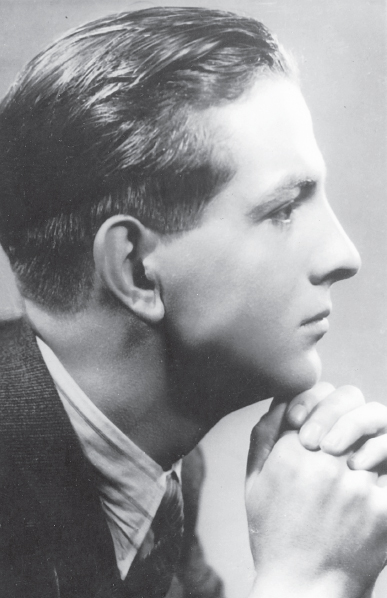
Pieter Cammaerts.
For Kippe, relief that the war might soon be over was mixed with apprehension. Since Tony had left for Abadan she had lived in a state of limbo, real life temporarily suspended. Now she was beset by anxieties. What would her husband do when he came home, and how would he provide for her and the boys? Where would they live? Would the Cammaerts family ever learn to respect him? And, more unsettling, did she respect him herself?
At the Eyrie, childhood rivalries and insecurities had continued to fester, and Tony Bridge had become a source of embarrassment to his young wife. His army career was unspectacular. Flat-footed and rather short-sighted, he had not been commissioned as an infantry officer, and had instead been enlisted into the Pioneer Corps – a blow to Kippe’s pride. His letters home were few and dull, much taken up with complaints about the oppressive Persian heat and his troublesome eczema. Just before Pieter’s death, Kippe’s sister Elizabeth had married an officer serving on the North-West Frontier. Jeanne, meanwhile, was engaged to an officer in the 16th Durham Light Infantry. The letters Elizabeth and Jeanne received were frequent, vivid and entertaining, and they delighted in reading them aloud in the nursery at the Eyrie, reawakening in Kippe the feelings of inadequacy and failure that she had suffered as a child.
Yet all might have been well if, as planned, Tony Bridge had returned home in the summer of 1945. Instead, at short notice, his Iranian posting was prolonged, and just when – as Emile Cammaerts later put it – Kippe was ‘keyed up’ to welcome him back, and ‘worn out by the preparations she had made to receive him and by a series of delays and disappointments’, Jeanne’s fiancé, Geoffrey Lindley, visited the Eyrie with an army friend, Jack Morpurgo.
The visit took place on 27 September 1945, and that morning Michael had spoken his first full sentence. Of Kippe’s first impressions of Jack, there is no record; but nearly half a century on Jack’s memories were vivid. ‘The door opened,’ he wrote, ‘and a girl came in carrying a laden tea-tray. It was unmistakably an entrance; all conversation was silenced … All my attention was centred on that tall, slim figure, its every movement a delicious conspiracy between art and nature.’ Here was a treasure, he reflected, ‘who would outshine all else in my collection’.
He knew that she was married, but on the train back to St Pancras that evening Jack Morpurgo comforted himself that ‘a girl as precious as Kippe had no need to waste her loveliness on the Pioneer Corps’.
Jack Morpurgo had all the qualities that Tony Bridge hadn’t. He was good-looking, witty and glamorous. ‘Confidence I never lacked,’ he admits in his 1990 autobiography, Master of None.
Born to working-class parents in the East End of London, thoroughly indulged by two adoring elder sisters and precociously clever, Jack had, at thirteen, won a scholarship to Christ’s Hospital, a school founded by Edward VI for poor children. From that moment on, he was relentlessly determined to better himself.
In November 1945 Kippe caught the train up to London and she and Jack spent the evening alone together. By the end of the year they were engaged in what Jack later described as a game of ‘Let’s pretend’ – ‘but we were not children, we were in love’.
Eventually Kippe wrote a letter to Tony, admitting her affair with Jack. On receiving it, Tony was granted compassionate leave. He made a painful progress back to England – Basra to Baghdad, Baghdad to Tel Aviv, Tel Aviv to Cairo, Cairo to Alexandria, across the Mediterranean to France, and, finally, by steamer into Newhaven. On Friday 1 February 1946 he and Kippe were reunited at the Rembrandt Hotel in Knightsbridge.
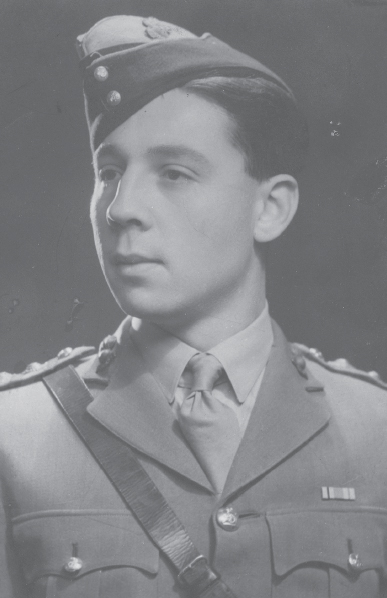
Jack Morpurgo.
They travelled together to Suffolk, and for a week bicycled around Blythburgh, Walberswick, Southwold, Tony hoping that, surrounded by silence and sea breezes, by tall churches, fluent countryside and early spring light, they might somehow recover what they seemed to have lost. They returned to the Eyrie, and for most of that spring they remained together. But the atmosphere was fraught and Kippe was still in touch with Jack.
The marriage was soon over. Tony left England. He emigrated to Canada, changed his name to Tony van Bridge, and eventually found work with the theatre director Sir Tyrone Guthrie in Stratford, Ontario.
Kippe’s parents disapproved of her relationship with Jack, and when she married him they were not present. Kippe was forced to turn from her own family to the Morpurgos. Shortly after the marriage, she and Jack moved from his flat in Notting Hill Gate to 84 Philbeach Gardens, near Earls Court. The tall, terraced house was somewhat beyond their means, so Jack’s two unmarried schoolmistress sisters, Bess and Julie, moved in with them to help pay the bills and look after the boys. A curious pair: Julie, who had been jilted when she was twenty-one, delicate and emotionally fragile; Bess big-hearted and controlling, they were to remain a part of the household for the next quarter of a century.


